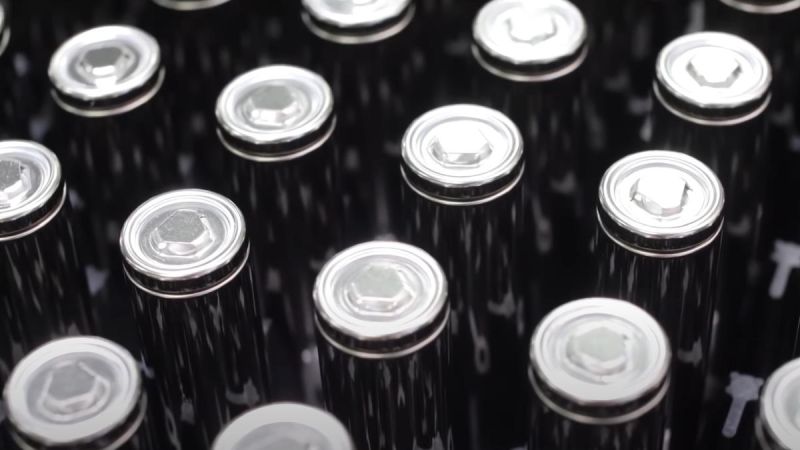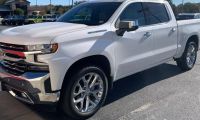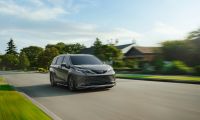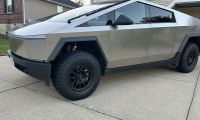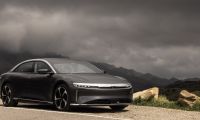Tesla and Batteries
When you look forward over the next decade, Tesla has one challenge it needs to overcome - and that is getting enough batteries to power the millions of vehicles it will produce and to power the hundreds of thousands of Megapacks and PowerWalls it will produce as well.
We need to hear from Tesla on Investor Day, how they are going to get sufficient battery materials - whether it's Lithium, Nickel, Graphite, Manganese, Copper, Sodium, or anything else. All these materials are in the Earth's crust and need to be extracted and refined. There are a lot of people saying the minerals just aren't there or can't be processed fast enough. How will Tesla solve this challenge?
The world is moving toward an electric future with solar, battery storage, and EVs. If this transition is going to accelerate, battery materials must be extracted a lot faster than they are right now. Elon Musk is positive about the future of Tesla and believes it is doable.
The Image From Investor Day
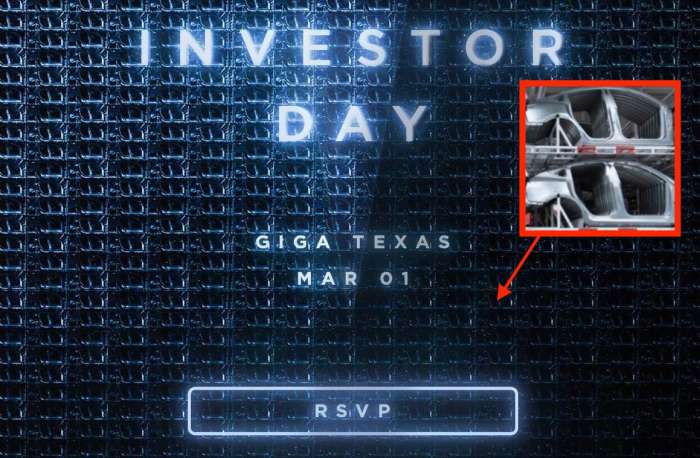
It appears that the image for the cover of Investor Day is a bunch of castings for the Model Y. It represents the scale of how much is needed to get there. It could be a representation of a chemical structure of what Tesla needs to do. And, it could be related to batteries or minerals. But, most likely, it's representing the castings and scale needed to mass produce the Model Y to 5 million units or more each year.
To reach the scale that Tesla envisions for the future, the world needs to get to about 20 to 30 TWh of batteries out there to be used for grid stabilization and vehicles. That is going to require extracting an enormous amount of materials from the Earth's crust. The infrastructure isn't there to do this yet, and something has to change.
Lithium - the Primary Mineral
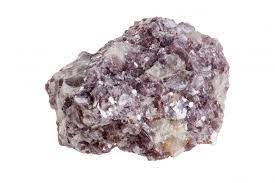
Recharge Resources is an early stage company that is focusing on extracting Lithium from the earth. They are researching doing this from South America. They have found Lithium in their searches. Their hope is to be able to build extraction sites that can get this Lithium. Advances in Lithium extraction have improved the ability to get at Lithium. Argentina could become a top producer of Lithium globally.
Lithium is trading at around $80,000 per ton. Tesla cannot get at all the Lithium and minerals on their own. The more Lithium society gets as a whole for society, the faster the transition to sustainable Energy will be. Hopefully, this company, as well as other mining companies, can help us get there faster.
Continued Exponential Growth Is Painful
Drew Baglino talked about growing exponentially. When you are only making 5 of something, going to 10 isn't that difficult. When you get to millions of something, doubling that becomes a lot more painful. It requires major shifts in culture, manufacturing, and engineering in order to sustain the growth.
The challenge is a scale problem. If Tesla continues to grow at 50% per year, then getting to the global annual production of 15 to 20 TWh per year. The world is close to 1 TWh per year - around 700 GWh, but there's still a lot more to go.
Cars are like giant phones, and the batteries take a lot more to produce. The material for the battery has to come out of the ground. It's a lot of earth to move to get to an eventual 300 to 500 TWh for global battery production. Once the world gets to that amount of material, battery recycling takes over and extraction no longer matters as much. This is a temporary problem with scale that has to be solved.
You may also be interested in:
- Tesla Vehicles Can Handle Extreme Cold and Heat.
- Tesla 'Most Profund AI Company' In the World.
- Owning a Tesla Without Home Charging.
How to Get More Batteries
We've seen the challenge of what is needed for Tesla and the world to scale to enough battery production. We need to totally remake the supply chain in order to make this happen. On Investor Day, Tesla could talk about how they will remake the supply chain in order to 20x their production. Everything has to be on the table in order to make this happen.
If Tesla is going to get to 20 million vehicles per year along with hundreds of thousands of Megapacks per year, they are going to have to radically shift in everything that is being done. It will require radical change in the supply chain, manufacturing, and doing something that isn't possible.
There are daunting numbers that have to be reached. The world has to find 160,000 TWh per year to come from renewables in order for the world to transition to sustainable energy. This is Energy produced by solar/wind in order to supply the energy the world uses. This will require about 400 TWh of energy to be deployed. Humanity is not even at 1/400 the way there.
Once recycling comes into play for batteries, a lot less need to be made every year. Long lifetime batteries will matter - a 50-year battery so that less new batteries have to be made. 50 year batteries will make it so that only about 8 TWh of batteries per year need to be made to reach a "steady state".
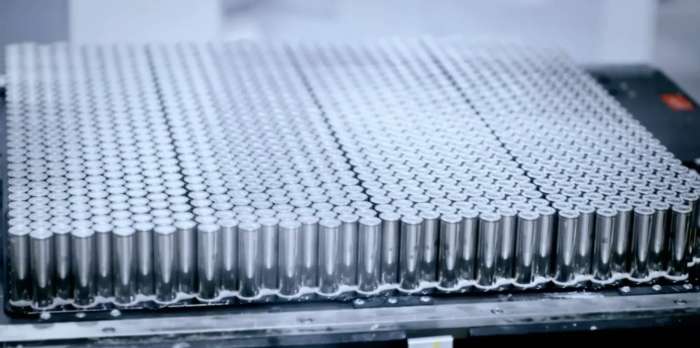
The Solution and Opportunity
This is a huge opportunity. Any company that gets into the business of mining materials from the earth for batteries will be in a position to take advantage of this opportunity. There is a lot of research being done on this. Does the world have enough resources to get to 300 TWh or 400 TWh of batteries deployed (in EVs, energy storage, and devices)? It ends up being about 500 million tons of material to get there. That's a ton! Literally.
There is no infrastructure or supply chain to make this happen. It will require a solution to be invented in all areas - from manufacturing, material extraction, and battery chemistry. Hopefully, Tesla is able to present something for Master Plan Part 3 that addresses this problem.
The design of the generation 3 vehicles will need a battery solution that is smaller than any other Tesla vehicle. A 40 kWh battery pack is less than a Model 3 at 60 kWh or a Model Y at 80 kWh.
Drew Baglino is focusing on Lithium. Why not Sodium? If you can get Sodium to be as efficient as Lithium, then you could use Sodium for grid storage energy. Right now, Sodium doesn't have the cycle life of Lithium. Research can help enable this to take the pressure off needing to get so much Lithium from the earth for batteries. It would be great if there was another chemistry on the table.
The Periodic Table of Elements for Batteries
According to Jeff Dahn, a battery expert, when you look at the Periodic Table of Elements, what materials will get us there? Lithium has a 20 parts per million availability in the earth. It's abundant to get to that point. Getting it out is a challenge. This is at 2030. In 2040, the world will need a lot more than that. For 200 parts per million, Lithium isn't available enough to extract.
A Sodium-ion or Iron battery chemistry can be made to get to the enormous scale needed for 2040 and beyond. It will take research from institutions to get there. Sodium-ion batteries aren't good enough to be used in production yet due to a smaller life cycle.
What Else Will Be Announced By Tesla?
Lithium is the #1 problem going out beyond 2030 when you take a long term perspective. Tesla will present the generation 3 vehicle platform. Tesla will also present the factory that will manufacture this vehicle. You must design both - the factory and the vehicle, in order to get to high volume production.
How do you get to a high mile per kWh? The Model 3 is at about 4.5 miles per kWh. Can the generation 3 vehicles get to 6 miles per kWh? If it is lighter and more aero-dynamic, then I think it can get there.
Aptera will produce a vehicle that I think will get MUCH more than 6 mile per kWh. With solar panels on the vehicle, this will enable the vehicle to get much more than that. I'm really looking forward to seeing the results of Aptera owner's efficiency. That vehicle is answering the problem needed to get more miles per kWh. I wouldn't be surprised to see that vehicle getting 10 miles per kWh or more.
The generation 3 vehicles will be a Toyota Corolla disruptor. If you can get the cost of the vehicle down to $15,000, you have a vehicle that costs $20,000. If that vehicle lasts a million miles, you can see how this efficiency would help Tesla get to a point to improve efficiency. They are going to have to make singles castings and change how the motors and wiring is done. Everything has to be on the table to reduce cost and increase efficiency.
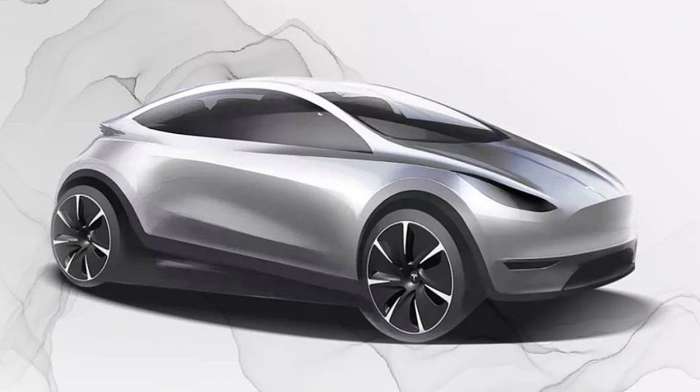
FSD Hardware 4 - and Hardware 5
We have seen pictures of Tesla's Hardware 4. The Cybertruck is going to use Hardware 4. What about Hardware 5? Elon Musk has said that there won't be much of a difference between Hardware 3 and Hardware 4, even though Hardware 4 will be better.
Hardware 5 will be put in the Robotaxi vehicle. This will have the most advanced hardware. The generation 3 vehicles will have a 40 kWh battery pack and efficiency of 6 miles per kWh. It will use an LFP battery. This will happen in 2025.
Other Announcements and Solutions
Tesla Energy needs to grow. Will Tesla announce an LFP battery in a 4680 structure? I think this would be good due to the abundance of iron in the earth.
Tesla will most likely announce Giga factories in Japan, South Korea, and other locations in order to continue their mission to reach 20 million vehicles per year. It's very early in the electrification game, and Tesla is poised to be the leader still.
What else will Tesla need to do to succeed here? Will they be able to get enough batteries made?
In Related News: Production Beta View of Tesla's Cybertruck
Leave your comments below, share the article with friends and tweet it out to your followers.
Jeremy Johnson is a Tesla investor and supporter. He first invested in Tesla in 2017 after years of following Elon Musk and admiring his work ethic and intelligence. Since then, he's become a Tesla bull, covering anything about Tesla he can find, while also dabbling in other electric vehicle companies. Jeremy covers Tesla developments at Torque News. You can follow him on Twitter or LinkedIn to stay in touch and follow his Tesla news coverage on Torque News.



